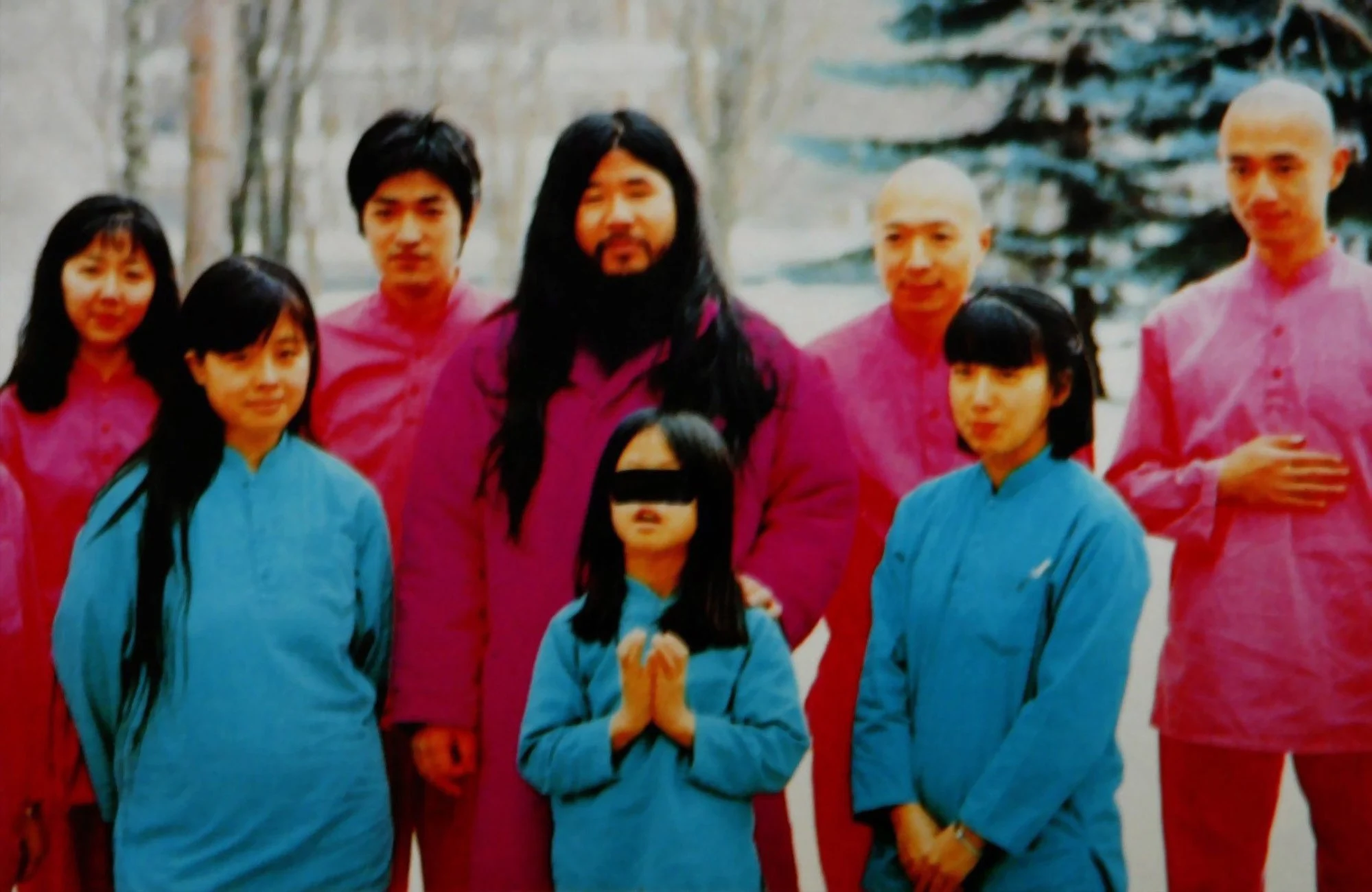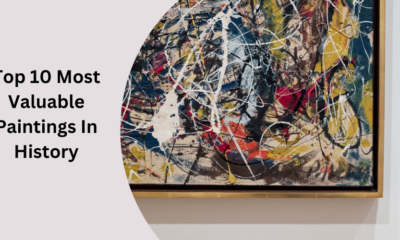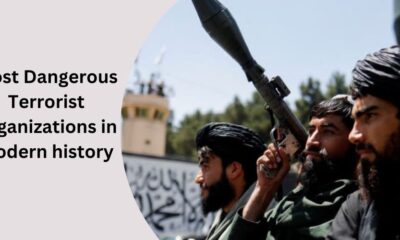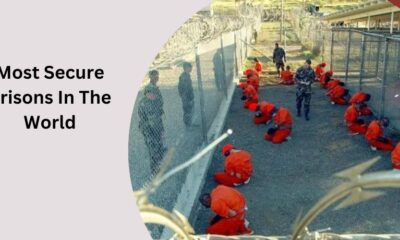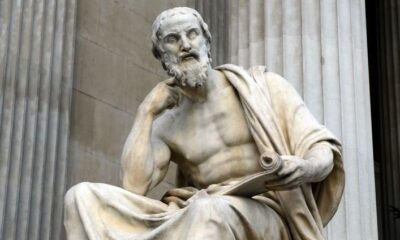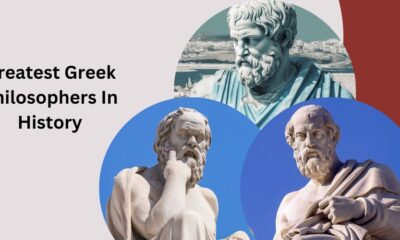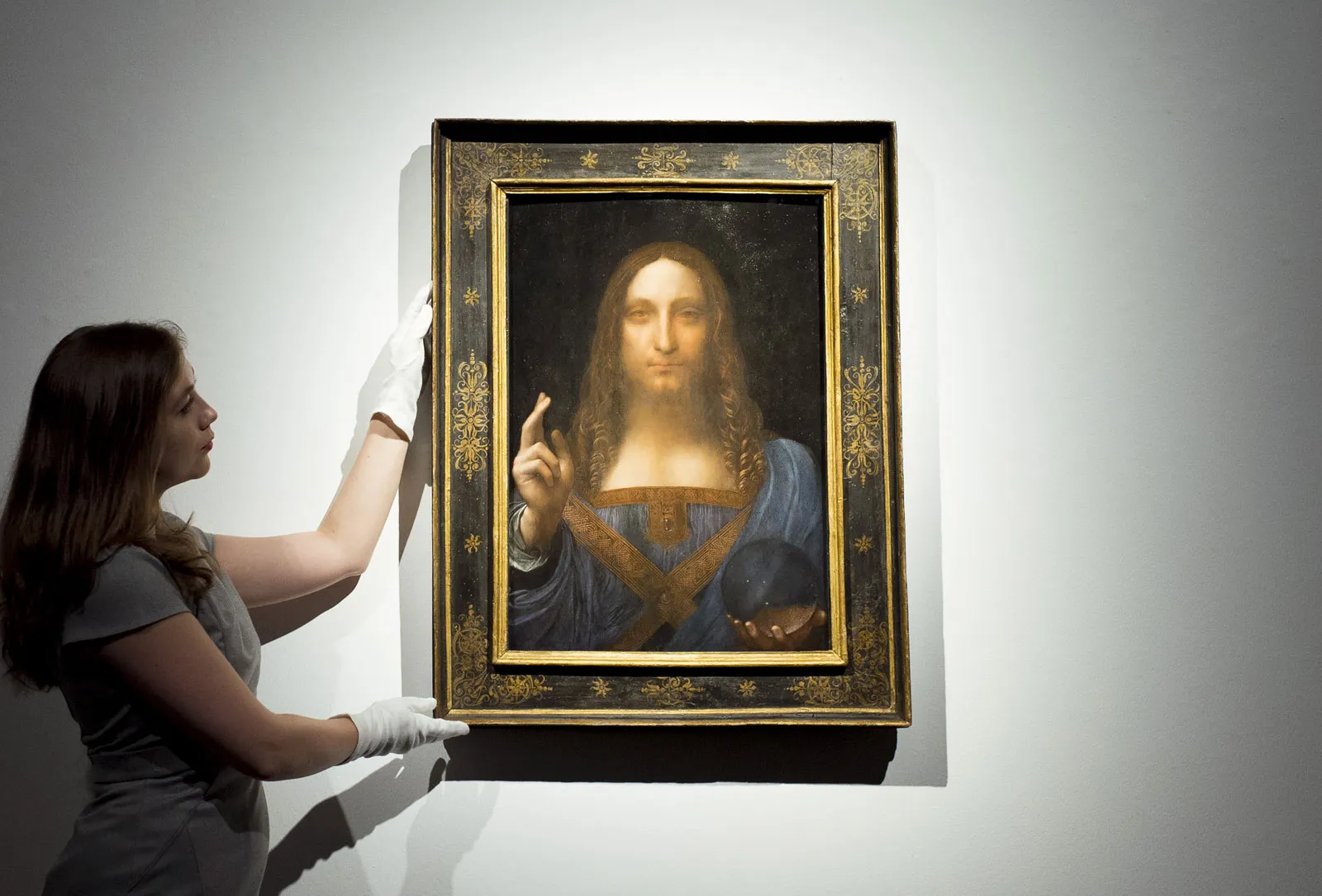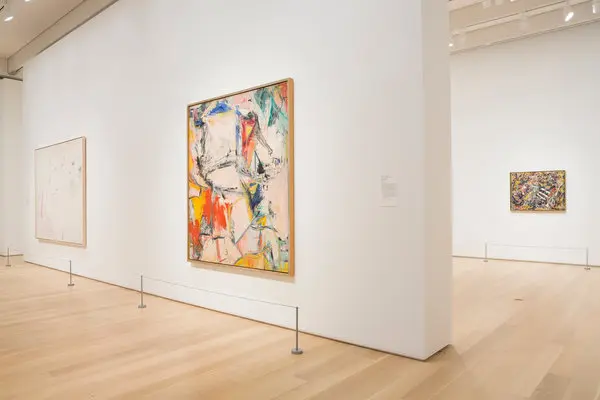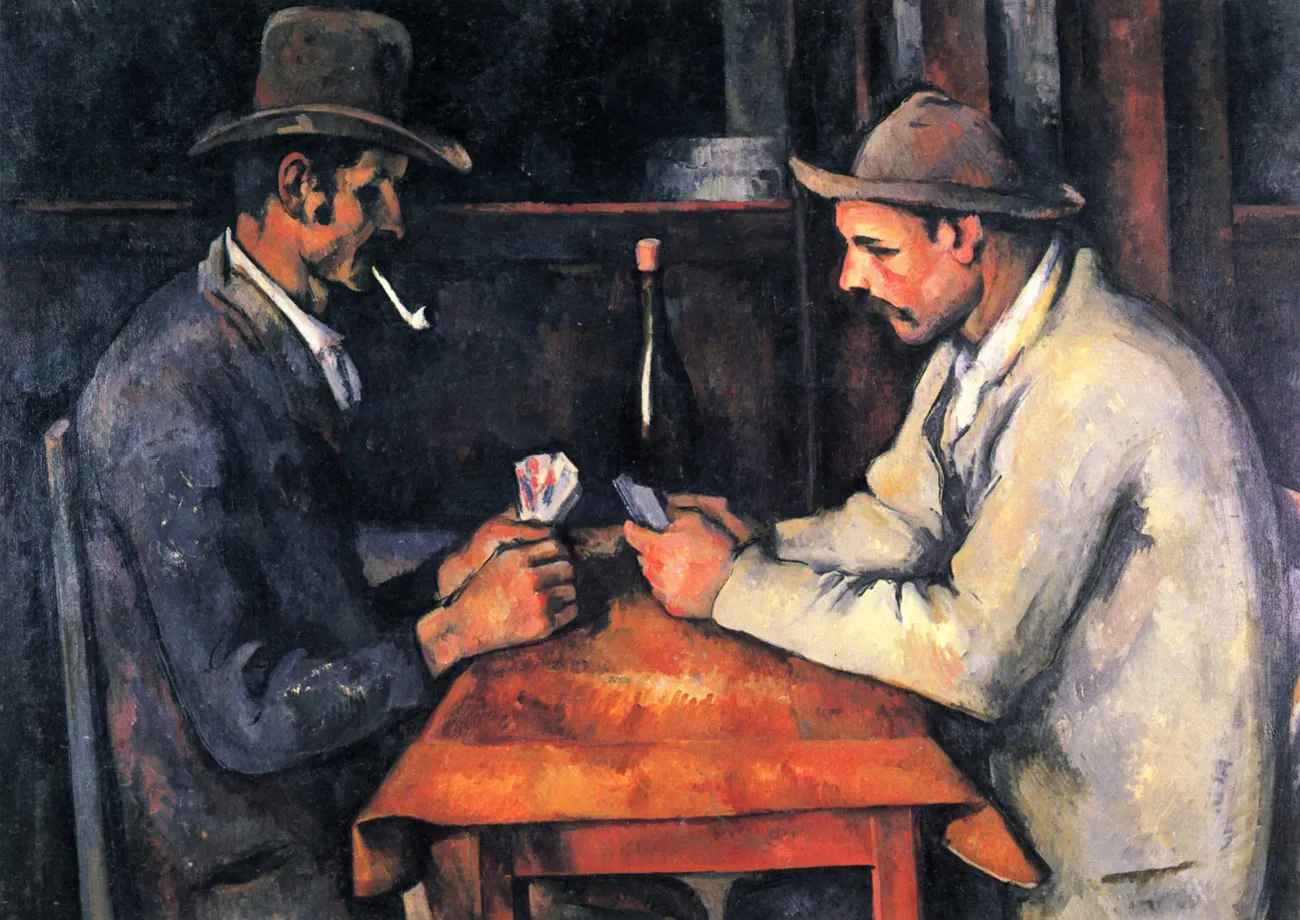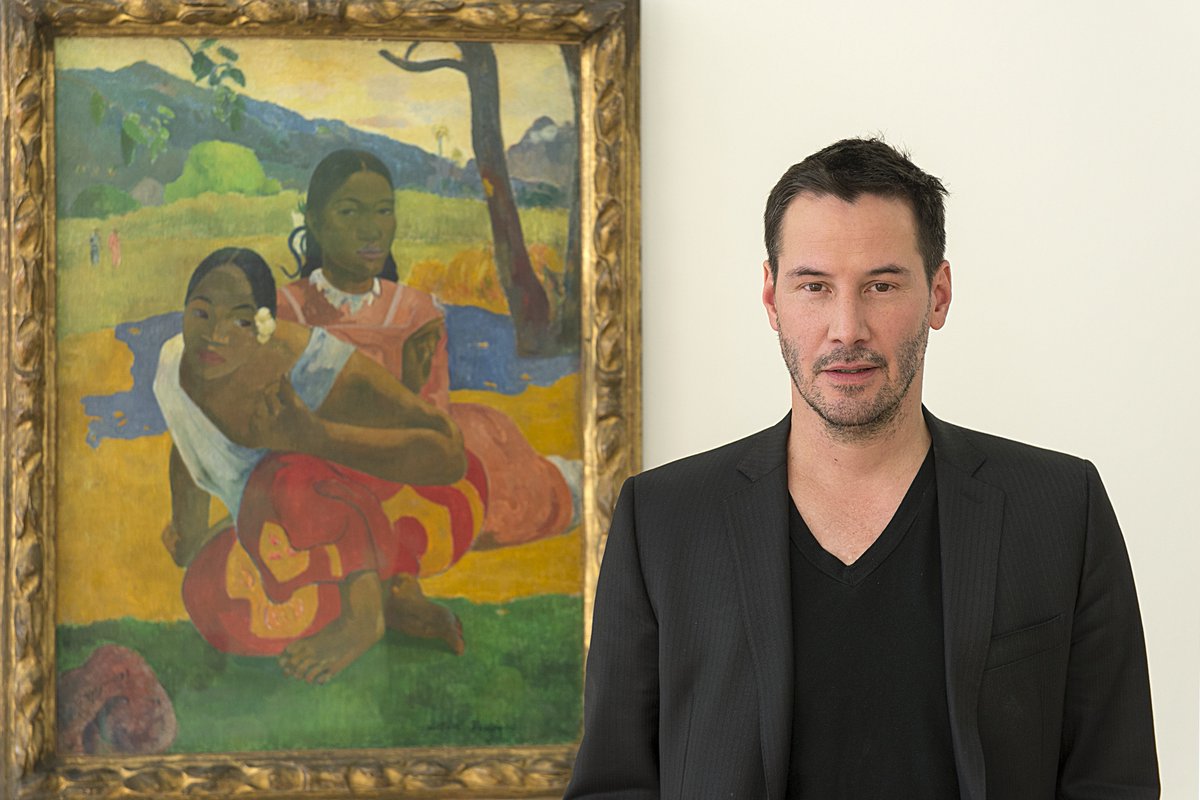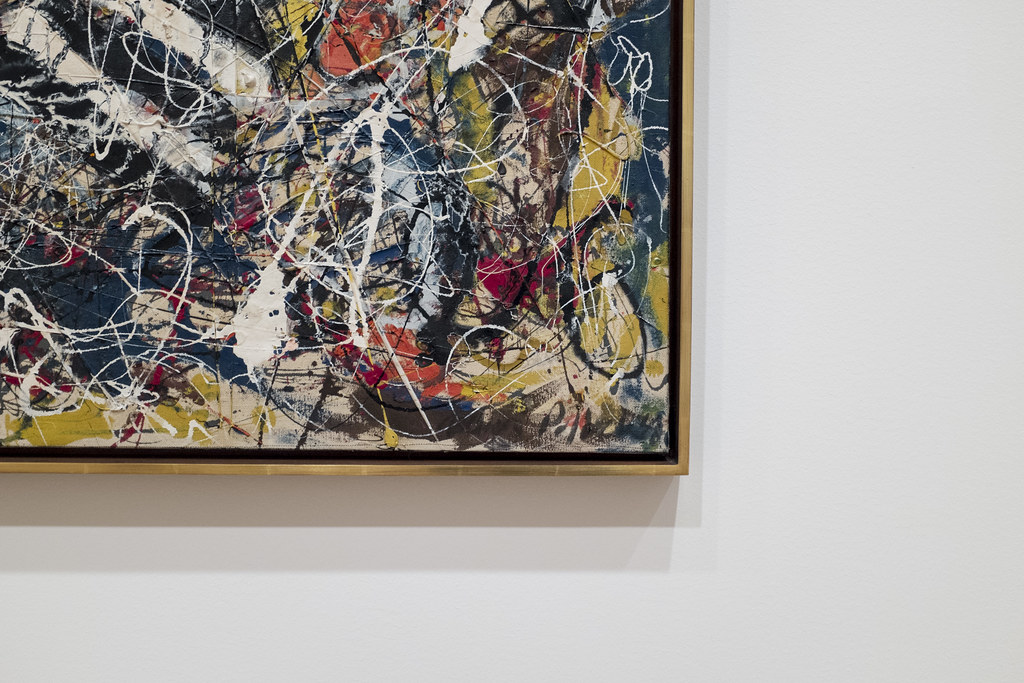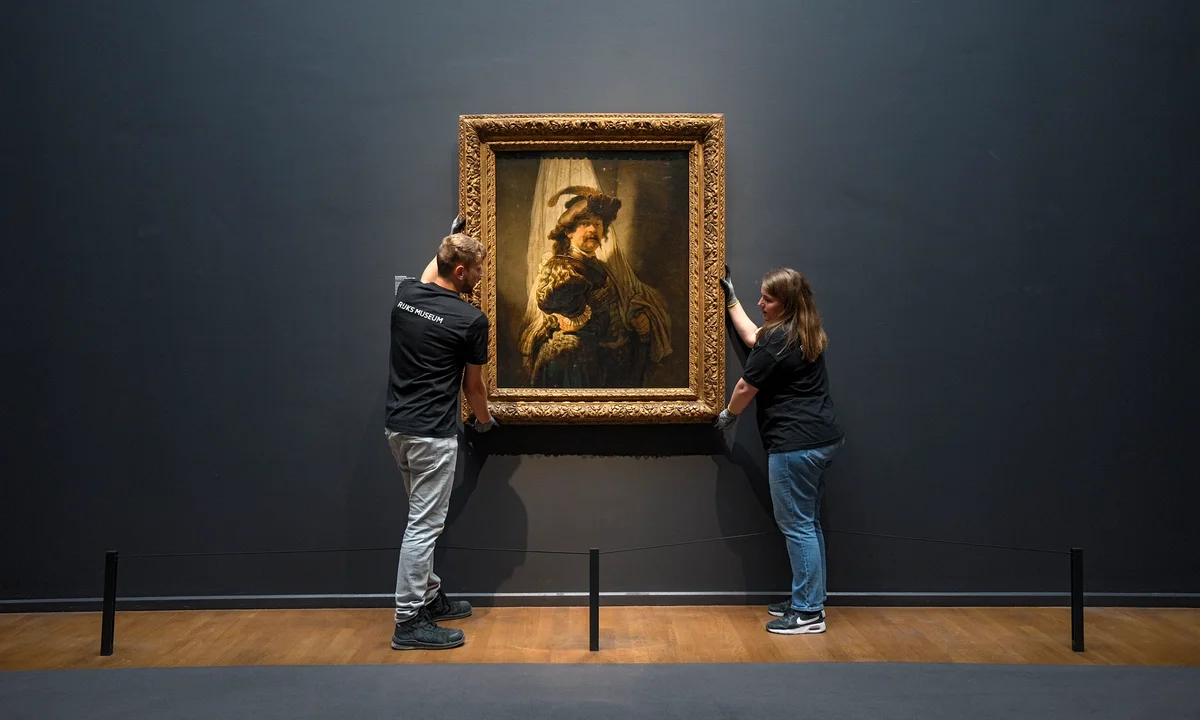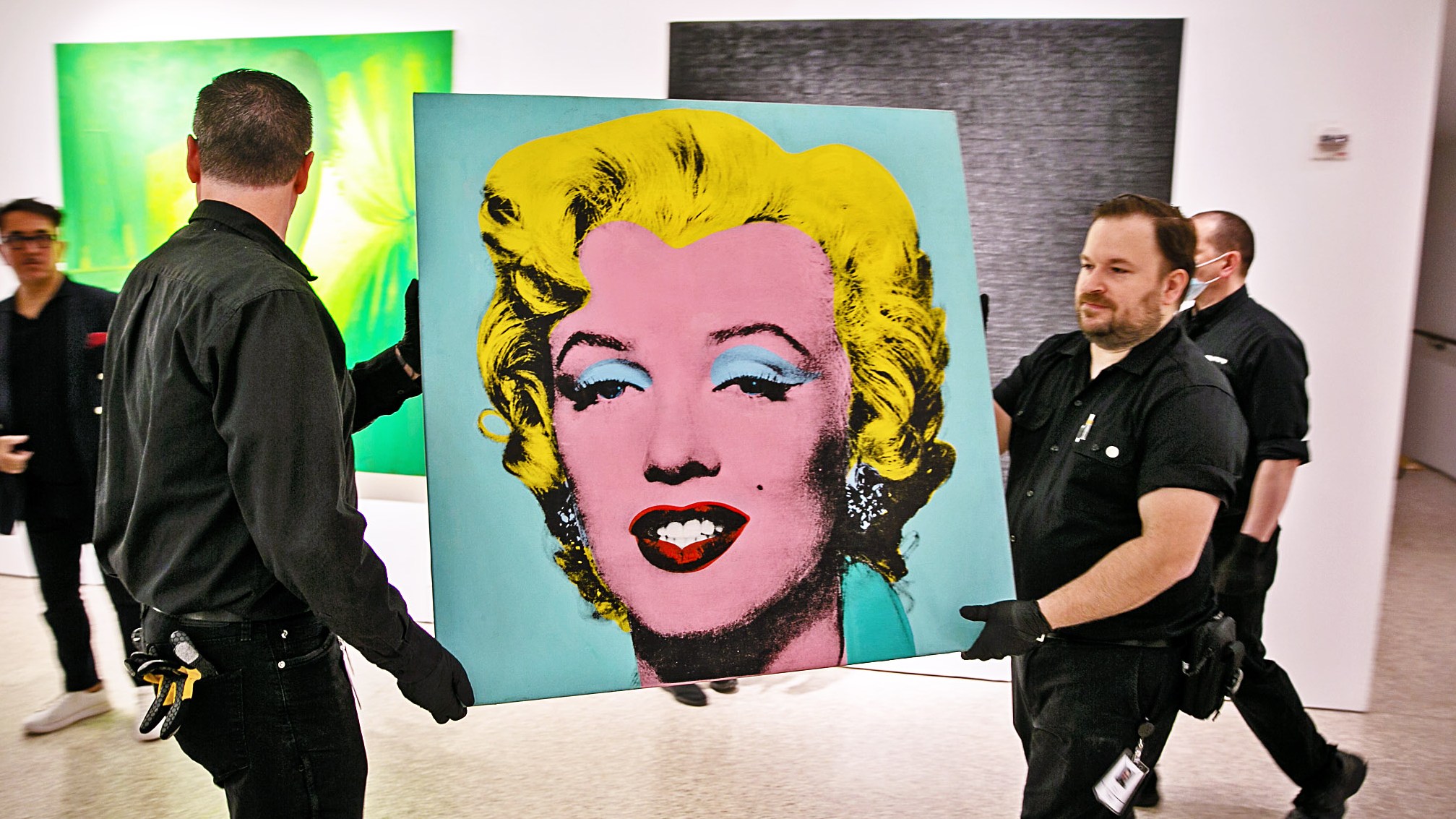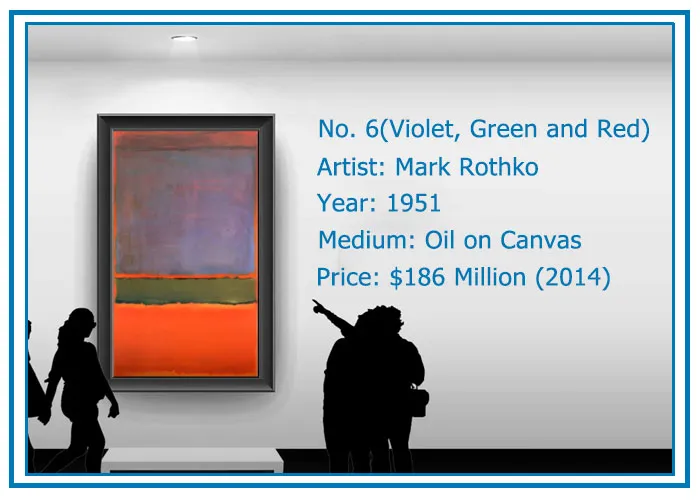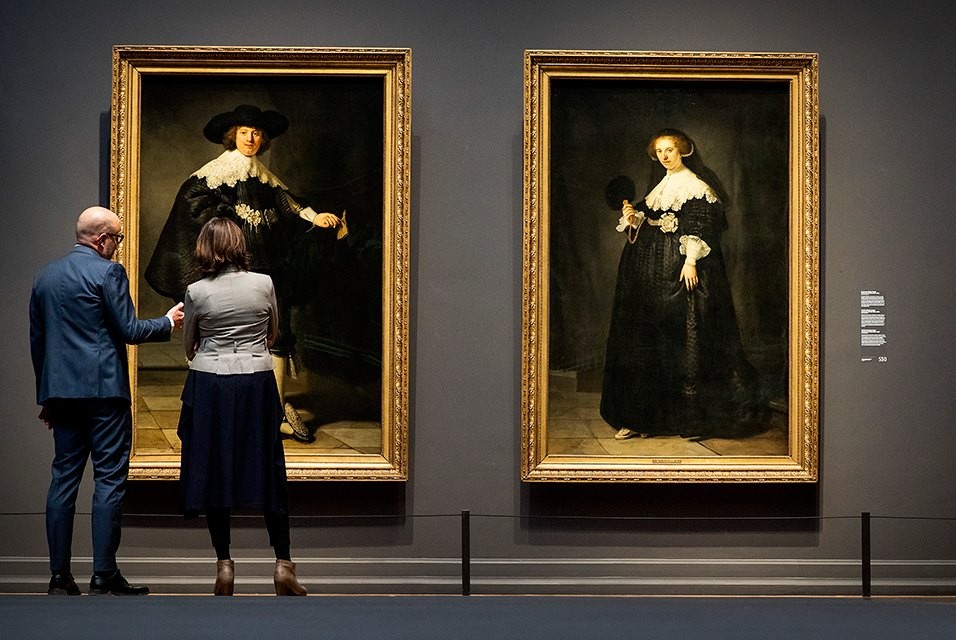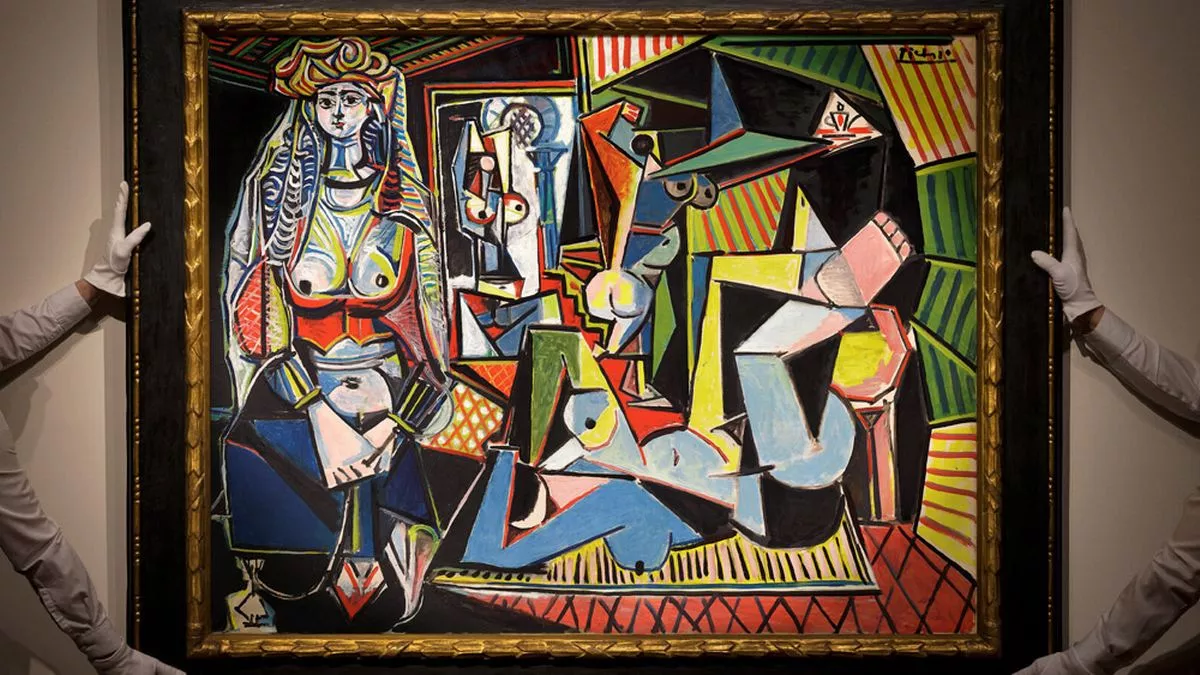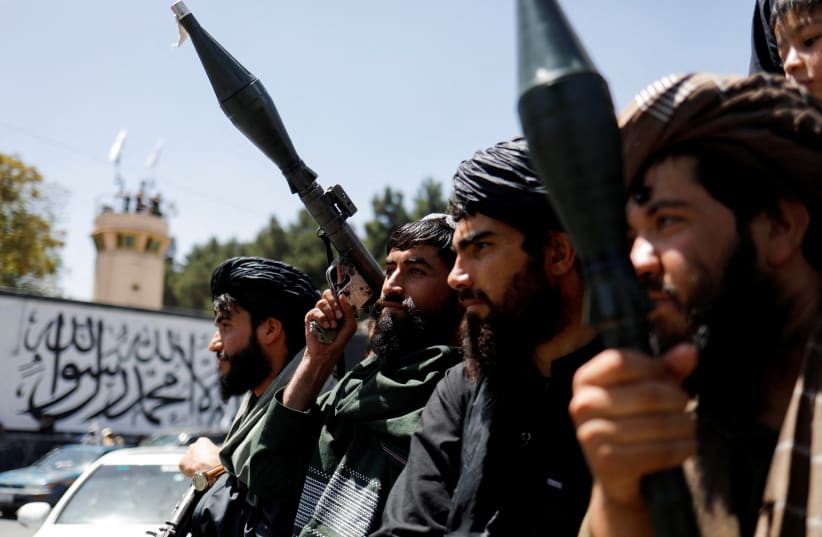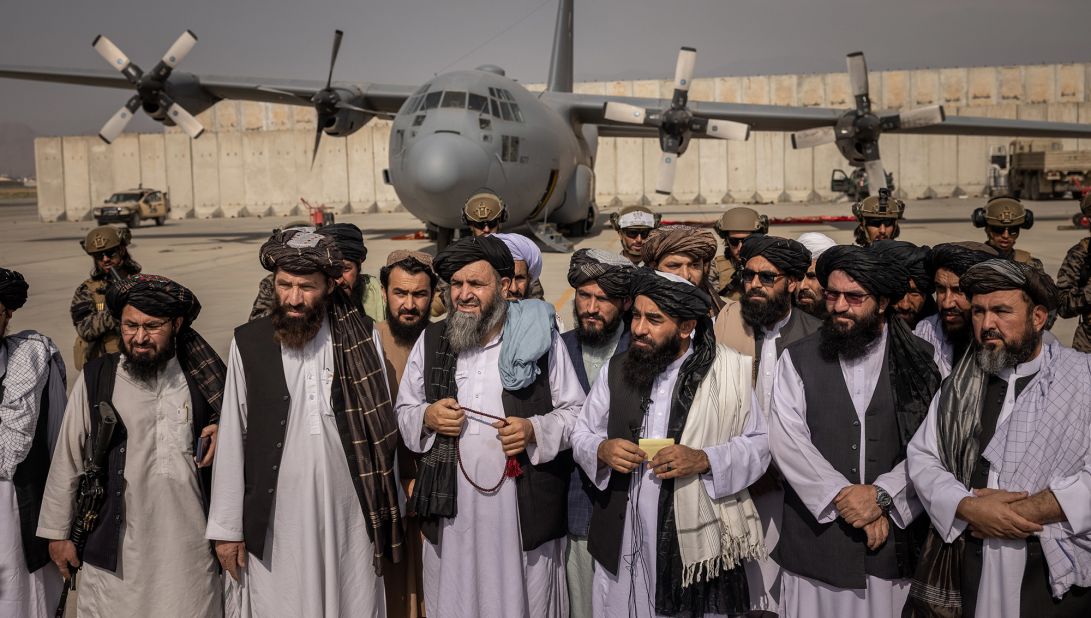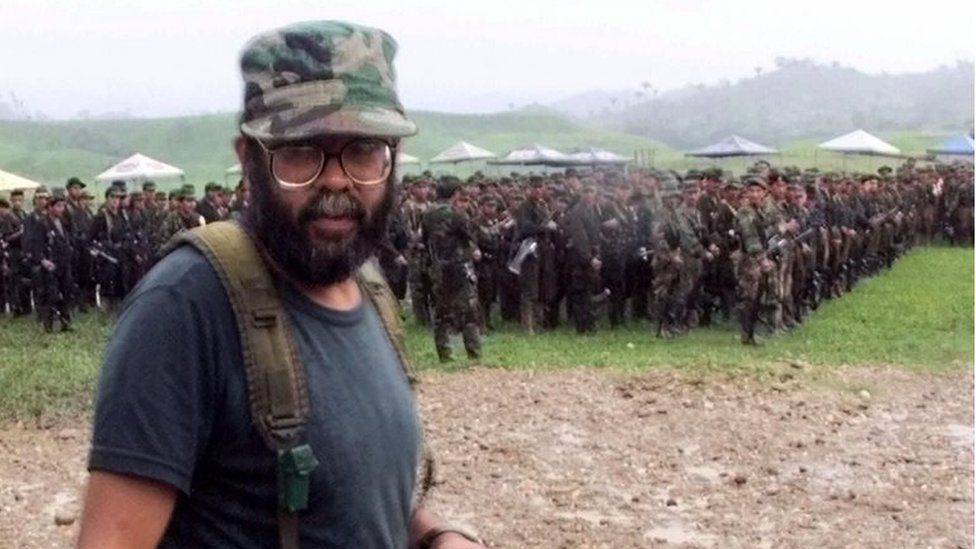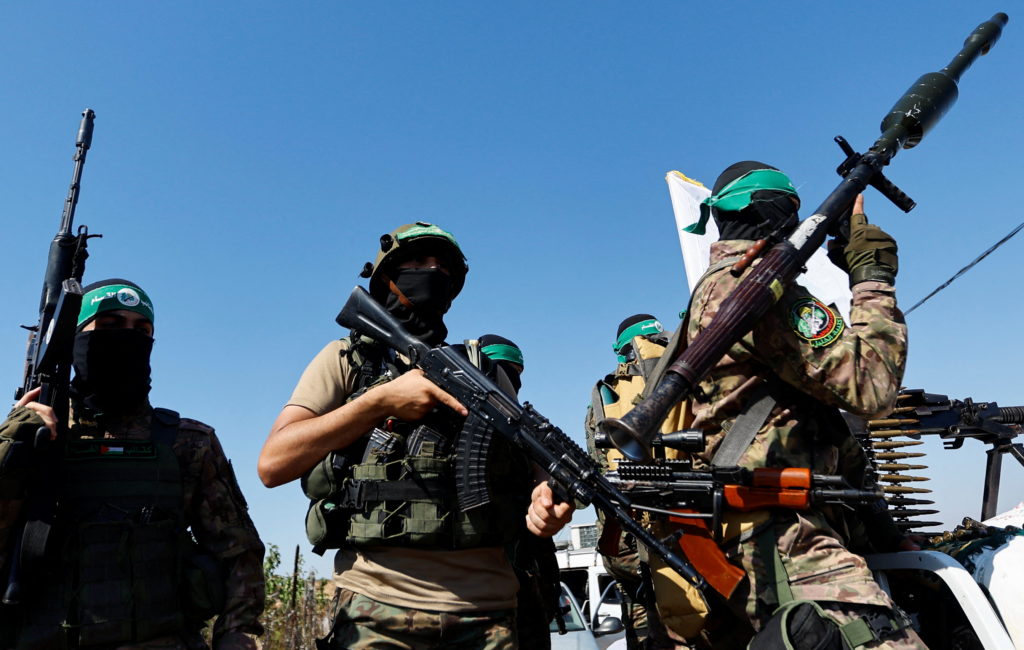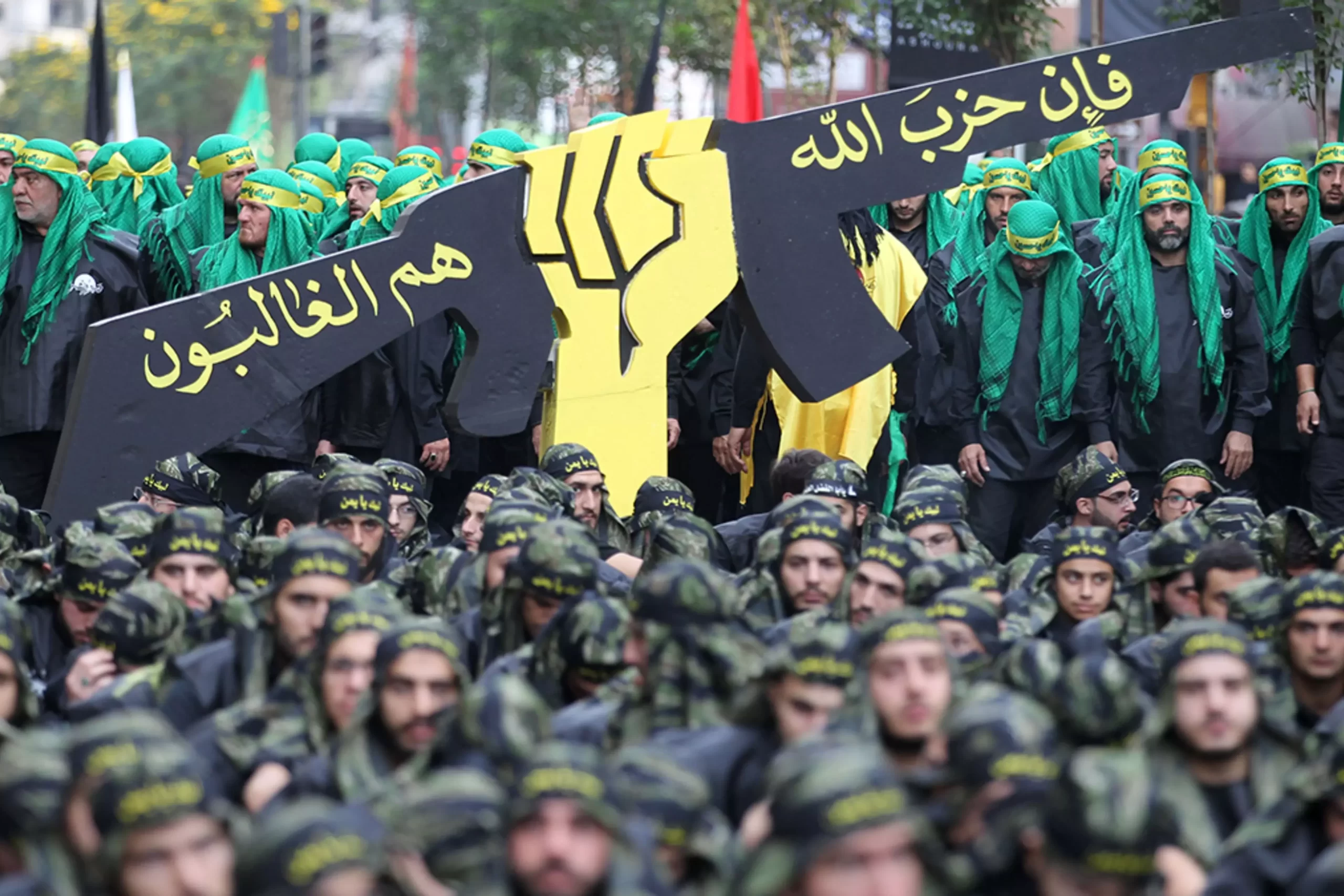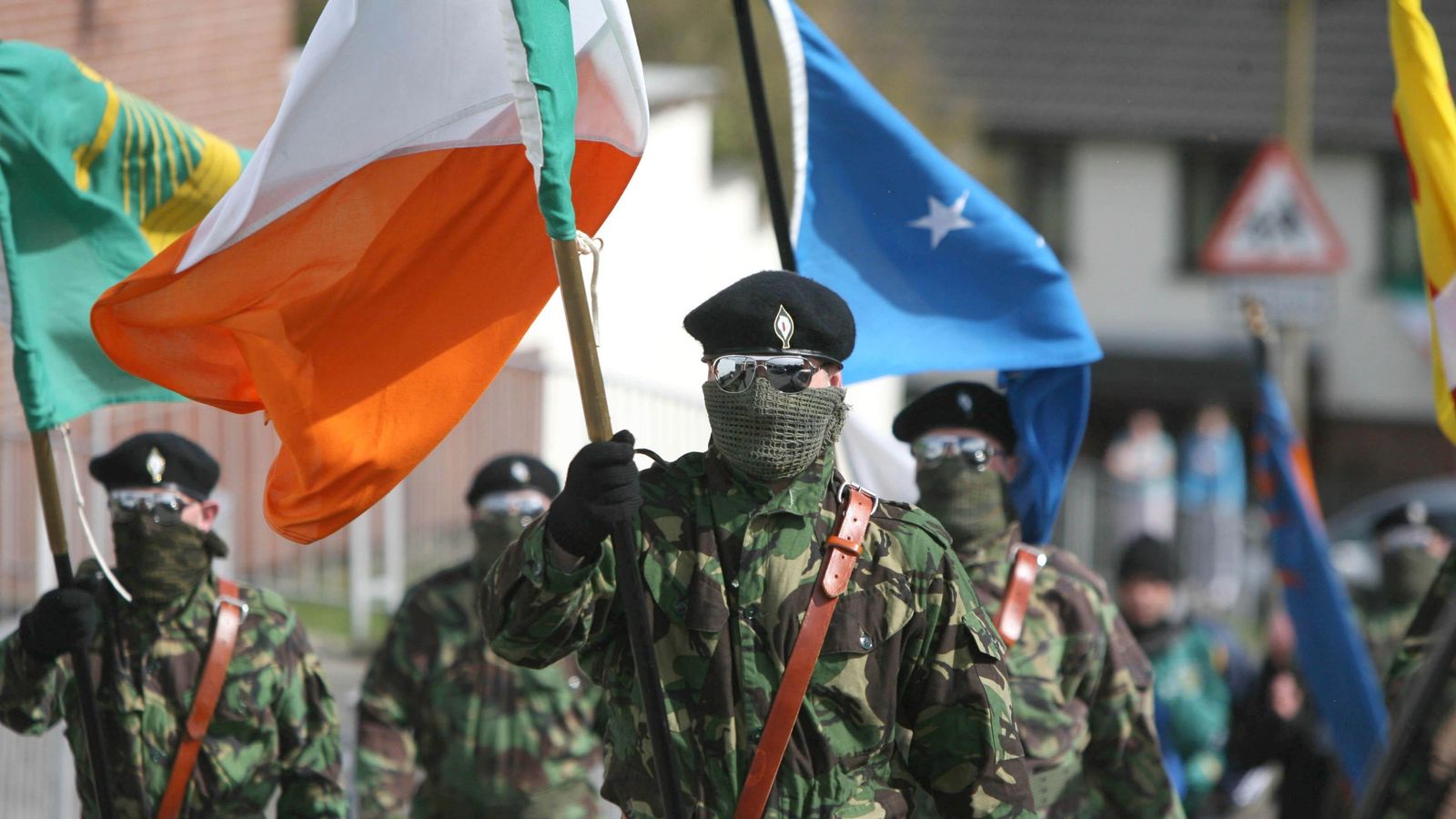History
The 10 Most Dangerous Cults In History
In this article, we shall explore the 10 most dangerous cults in history revealing their origins, ideologies, and tragic consequences that brings about the end of these perilous organizations.
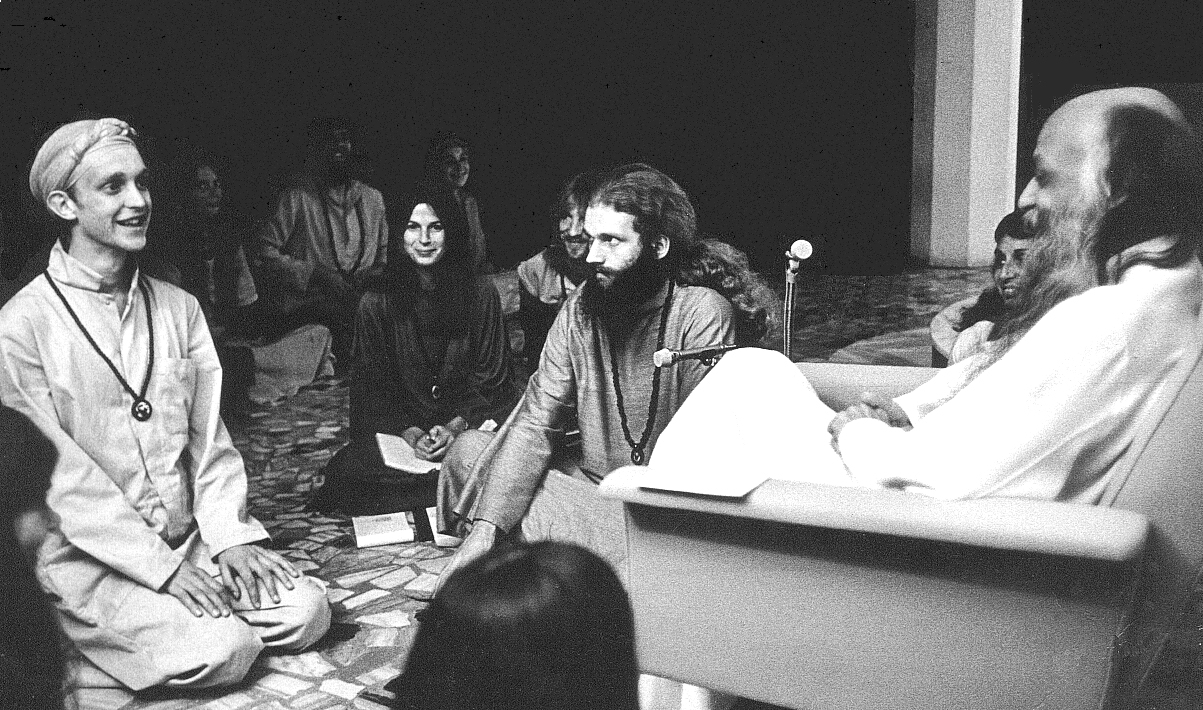
Several cult groups have emerged throughout history, as agents of chaos, negatively impacting the entire world through their extremist ideologies and horrific acts. These groups, often operating outside the scope of conventional belief systems, captivate their followers with their charismatic leadership. promises of salvation, enlightenment, or transcendence, only to lead them down the paths of manipulation, violence, and tragedy. In this article, we shall explore the 10 most dangerous cults in history revealing their origins, ideologies, and tragic consequences that often bring about the end of these perilous organizations.
1. People’s Temple
The Peoples Temple of the Disciples of Christ, popularly known as People’s Temple is a religious cult founded by Jim Jones in the United States in the 1950s. Preaching the principles of racial equality, socialism, and community, at its inception, the group gained a following for its emphasis on social justice. However, over time, Jim Jones became increasingly authoritarian and paranoid, leading the People’s Temple to relocate to Guyana in South America in the late 1970s.The People’s Temple cult gained notoriety and international acclaim, after, over 900 members of the cult died in a mass murder-suicide event on November 18, 1978, in Jonestown, Guyana. Most of the deaths were caused by drinking cyanide-laced Flavor Aid, a horrific event that remains one of the largest mass casualties in modern history. Before the suicide, members of the cult had shot and killed US Congressman Leo Ryan, who visited the group to investigate reports of abuse of members.
The most infamous incident associated with the People’s Temple cult occurred on. Acting on Jones’s orders, over 900 members of the cult died in a mass murder-suicide event.
2. Heaven’s Gate
Heaven’s Gate was a cult group founded by Marshall Applewhite and Bonnie Nettles in the 1970s. The group combined elements of Christianity with science fiction beliefs, focusing on the idea of extraterrestrial salvation. The founder Applewhite convinced his followers that Earth was about to be wiped clean, and the only way to survive was to shed their human bodies and ascend to a spacecraft traveling behind the Hale-Bopp comet.
The group’s adherence to a unique combination of apocalyptic visions and UFO mythology led to one of the most notable mass suicides in modern history. In 1997, 39 members of the cult, including Applewhite, participated in a mass suicide event in a mansion in Rancho Santa Fe, California. They believed that by shedding their earthly vessels, they would be transported to the supposed spacecraft and continue their existence in a higher plane.
3. Aum Shinrikyo
Aum Shinrikyo was a Japanese doomsday cult founded by Shoko Asahara in the 1980s. The group blended elements of Buddhism, Hinduism, and apocalyptic visions with a focus on developing a new world order under their divine leadership. At the inception, Shoko Asahara claimed to be Jesus Christ garnering tens of thousands of followers across the world. His teachings started as spiritual and then became increasingly violent. Cult members even paid money to drink Asahara’s blood.
The cult gained international attention in 1995 when its members carried out a terrorist attack on the Tokyo subway system. They released sarin gas during the morning rush hour, resulting in the deaths of 13 people and the injury of over a thousand others. They also carried out the murder of dissenting members and plots to release other chemical weapons. Shoko alongside several cult members were eventually arrested and convicted for their roles in the subway attack.
4. Order of the Solar Temple
The Order of the Solar Temple was a cult founded by Luc Jouret and Joseph Di Mambro in the 1980s. Like many on this list, the cult combined elements of Christianity, New Age philosophy, and UFO conspiracy theories. They believed in a cosmic transformation that would allow them to escape the impending apocalypse and be reborn on a mythical planet. There are unverified reports of Jouret and other members of the group allegedly sacrificing a child they thought to be the antichrist.
The cult gained notoriety in the 1990s due to a series of mass suicides. Members believed that death was a transition to a new life on another planet and that suicide was the means to achieve this transformation. The suicides were often carried out in a ritualistic manner, involving the consumption of poison and arranged bodies in specific postures. In October 1994, 48 members of the cult including its leaders, were discovered in the Swiss villages of Cheiry and Granges-sur-Salvan.
5. The Branch Davidians
The Branch Davidians were a religious cult that originated as an offshoot of the Seventh-day Adventist Church in the 1930s. The group gained notoriety in the 1990s under the leadership of David Koresh. David Koresh believed that he could talk to God. He also thought that the world was ending. He managed to convince more than 100 people to move to a compound outside of Waco, Texas, and follow his teachings which included his belief that men could have multiple wives, including girls as young as 10.
The Branch Davidians’ beliefs combined elements of Christianity with apocalyptic visions and a unique interpretation of the Bible. On February 28, 1993, Law enforcement arrived on the scene to arrest Koresh and ended up in a 51-day standoff. The standoff culminated in a raid by the Bureau of Alcohol, Tobacco, and Firearms (ATF) and later the FBI. In the end, the standoff came to a close when the compound combusted into flames. 75 people died, and Koresh was found with a gunshot wound to the head.
6. Manson Family
History
Top 10 Most Valuable Paintings In History
In this article, we’ll explore the ten most valuable paintings in history, exploring their beauty, history, and what makes them so valuable.
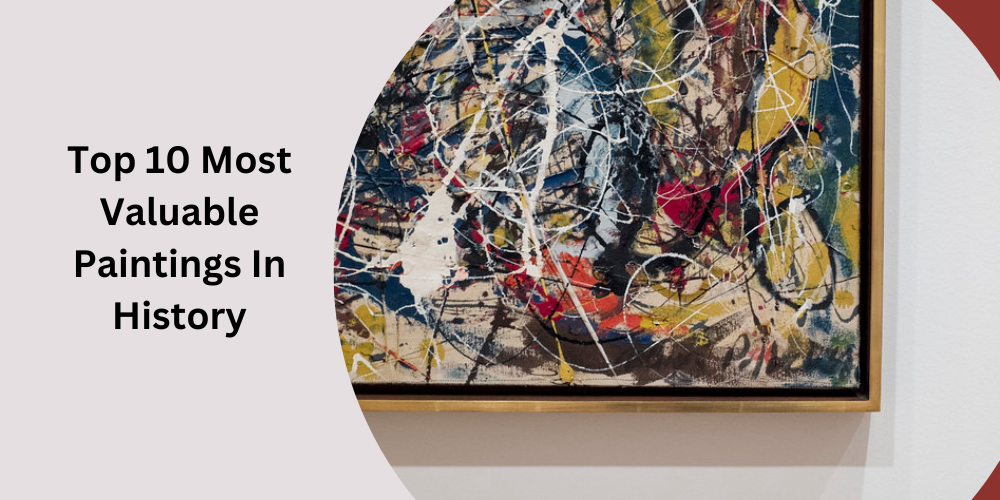
Art is more than just painting on a canvas; it’s a world of creativity, history, and big money. Some paintings are worth more than entire mansions or even small countries! These special paintings are like celebrities in the art world loved and admired by many. Examples include Leonardo da Vinci’s mysterious “Salvator Mundi” or Jackson Pollock’s colorful “Number 17A.” These paintings aren’t just pretty pictures; they’re like treasure chests full of stories, emotions, and secrets. In this article, we’ll explore the ten most valuable paintings in history, exploring their beauty, history, and what makes them so valuable.
1. Salvator Mundi By Leonardo Da Vinci ($450.3 Million)
“Salvator Mundi” by Leonardo da Vinci is one of the most famous and valuable paintings in history. Created around 1500, it depicts Jesus Christ holding a crystal orb in one hand and making a gesture of blessing with the other. The painting’s attribution to Leonardo da Vinci has been a subject of debate among art historians, but it gained widespread recognition as a work by the master artist.
In 2017, “Salvator Mundi” made headlines when it was sold at auction for a staggering $450.3 million, making it the most expensive painting ever sold at the time. The auction took place at Christie’s in New York City and was sold to the Crown Prince of Saudi Arabia, Sheikh Mohammed bin Salman Al Saud through his Minister of Culture.
2. Interchange By Willem De Kooning ($300 Million)
“Interchange” by Willem de Kooning is a masterpiece of abstract expressionism, created by the Dutch-American artist in 1955. Known for its dynamic brushwork, vibrant colors, and energetic composition. The painting is considered one of de Kooning’s most iconic works and is admired for its bold experimentation and profound impact on the trajectory of modern art.
“Interchange” was reportedly sold in a private sale for a staggering $300 million In 2015. This sale price set a new record for the highest amount ever paid for a painting at that time, further solidifying de Kooning’s status as one of the most influential artists of the 20th century. The painting is currently on loan at the Art Institute of Chicago.
3. The Card Players By Paul Cezanne ($250 Million)
“The Card Players” by Paul Cézanne is a monumental work within the realm of post-impressionist art. Painted by the French artist between 1890 and 1892, this series of paintings depicts Provencal peasants engrossed in a game of cards, rendered with Cézanne’s characteristic use of geometric forms and muted colors.
“The Card Players” achieved extraordinary recognition when it was reportedly sold in a private sale for an astounding $250 million in 2011. The buyers of the piece were the Royal Family of Qatar. There are 4 other pieces titled the same, but they are placed at the Metropolitan Museum of Art, the Musée d’Orsay, the Courtauld, and the Barnes Foundation.
4. Nafea Faa Ipoipo By Paul Gauguin ($ 210 Million)
“Nafea Faa Ipoipo ” translated to When Will You Marry is a post-impressionist painting by Paul Gauguin. The painting exemplifies the artist’s fascination with exoticism and the South Pacific. Painted in 1892 during Gauguin’s stay in Tahiti, the artwork features two Tahitian women in vibrant traditional attire set against a lush tropical landscape.
In 2014, “Nafea Faa Ipoipo” was reported to have been sold in a private sale for $210 million, making it one of the most valuable paintings in history. News reports reveal that Swiss businessman Rudolf Staechelin sold the painting to a Qatari buyer for $300 million. However, a lawsuit in 2017 later revealed that the actual sale price was $210 million.
5. Number 17A By Jackson Pollock ($200 Million)
“Number 17A” by Jackson Pollock represents a pinnacle of abstract expressionism, showcasing the artist’s signature style characterized by energetic drips, splatters, and swirls of paint on a large canvas. Painted in 1948, this masterpiece exemplifies Pollock’s innovative approach to painting, which revolutionized the art world and redefined the boundaries of artistic expression.
“Number 17A” was reportedly sold in a private sale for an astounding $200 million in 2015, making it one of the most valuable paintings in the world. The painting was sold as part of a deal with the David Geffen Foundation and Kenneth Griffin, who also bought Interchange. The total deal cost him US$500 million.
6. The Standard Bearer By Rembrandt ($ 198 Million)
“The Standard Bearer” is a painting by the renowned Dutch Golden Age artist Rembrandt van Rijn, completed in 1636. This masterpiece depicts the painter in armor, holding a flag or standard, and gazing off into the distance with a solemn expression. The painting serves as a prime example of Rembrandt’s skillful use of chiaroscuro.
This masterpiece once graced the collection of England’s King George IV before it found its way into the possession of the Rothschild family in 1844. In late 2021, the Dutch government revealed its intention to purchase the painting from the Rothschilds to include it in the country’s esteemed national collection. It was eventually acquired by the government in 2022 for a sum of $198 million.
7. Shot Sage Blue Marilyn By Andy Warhol ($ 195 Million)
Shot Sage Blue Marilyn” is one of Andy Warhol’s iconic Marilyn Monroe series, created in the aftermath of the actress’s tragic death in 1962. The painting is a silkscreen print depicting Monroe’s portrait in a vibrant blue hue, overlaid with bold black lines. The series is celebrated for its exploration of fame, mortality, and the cult of celebrity in American society.
In 2022, the art world was stunned by the sale of Andy Warhol’s iconic artwork titled “Shot Sage Blue Marilyn,” which fetched just over $195 million at Christie’s auction, with American art dealer Larry Gagosian as the buyer. The series earned its distinctive name when the performance artist Dorothy Podber fired shots at four of the paintings using a pistol.
8. No 6 Violet Green And Red’ By Mark Rothko ($186 Million)
“No. 6 (Violet, Green and Red)” is a significant work by the renowned abstract expressionist artist Mark Rothko. Created in 1951, this painting is characterized by its large-scale format, and the expressive intensity that Rothko is celebrated for. The painting exemplifies his signature style with two expansive areas of vibrant violet and red, separated by a band of soothing green.
In 2014, “No. 6 (Violet, Green and Red)” garnered attention when it was reportedly sold in a private sale for an impressive $186 million. The acquisition was made from Yves Bouvier, who later faced numerous international lawsuits for allegedly misrepresenting and overcharging for several artworks, including No. 6.
9. Portraits Of Maerten Soolmans And Oopjen Coppit By Rembrandt Van Rijn ($ 180 Million)
“Portraits of Maerten Soolmans and Oopjen Coppit” are a pair of full-length wedding portraits painted by the Dutch master Rembrandt van Rijn in 1634. The paintings depict Maerten Soolmans and his wife, Oopjen Coppit, standing in lavish attire against dark backgrounds. The portraits are celebrated for their exquisite detail, and masterful use of light and shadow.
In 2015, the Rijksmuseum in Amsterdam and the Louvre Museum in Paris jointly acquired the portraits for a reported total of €160 million (approximately US$180 million at the time). To preserve the significance and unity of the pair, the two European museums made an agreement to take turns exhibiting the portraits, ensuring that portraits will forever be displayed together.
10. Les Femmes D’alger (Version O) By Pablo Picasso (Us$179.4 Million)
“Les Femmes d’Alger (Version ‘O’)” by Pablo Picasso is a masterpiece of modern art, part of a series of 15 paintings created by Picasso in 1955 as a tribute to the French painter Eugène Delacroix. This particular version, “Version ‘O,'” is the final and most elaborate painting in the series, showcasing Picasso’s iconic style and mastery of color, form, and composition.
“Les Femmes d’Alger (Version ‘O’)” in 2015, was sold at auction for an astonishing $179.4 million, setting a new record for the highest price ever paid for a work of art at that time. This painting was bought by the Qatari royal family in 2015. The painting is representative of Algerian concubines in their harem with a hookah used to smoke hashish or opium.
Read More:
History
The 10 Most Dangerous Terrorist Organizations in Modern history
This article compiles some of the most dangerous terrorist organizations in modern history, exploring their ideologies, activities, and profound impact on the world.
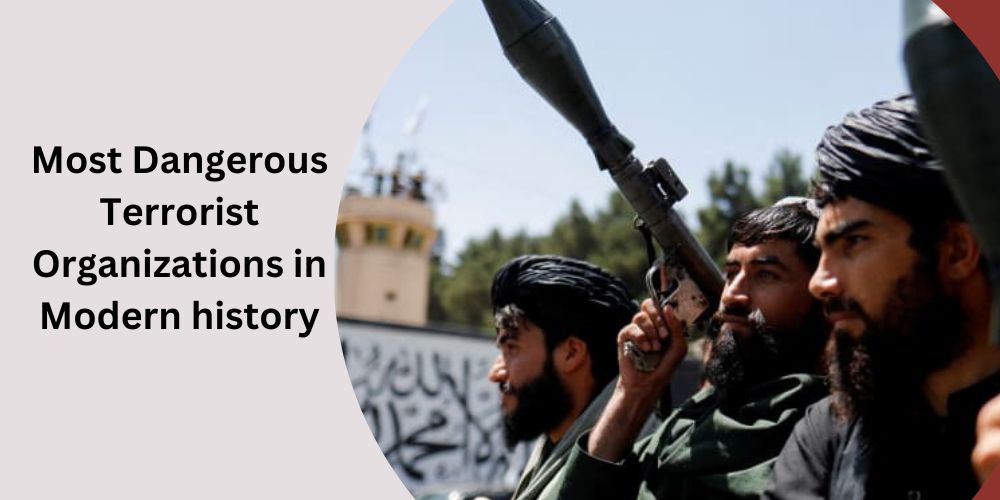
In the last and present century, the world has witnessed the emergence of various terrorist organizations, all of which have caused concern regarding the security of innocent lives. These groups, often driven by ideological, religious, or political motivations, employ violence and terror as strategic tools to achieve their objectives. Their impact also extends far beyond their immediate targets, with ripple effects felt on the political and socio-economic structures of the states. This article compiles some of the most dangerous terrorist organizations in modern history, exploring their ideologies, activities, and profound impact on the world.
1. Al-Qaeda
Al-Qaeda is one of the most dangerous terrorist organizations in modern history. It was founded in 1988 by Osama bin Laden, a Saudi Arabian militant, Al-Qaeda gained global notoriety for its involvement in high-profile acts of terrorism. The group’s primary goal has been to establish an Islamic state based on its interpretation of fundamentalist Sunni Islam.
Al-Qaeda gained widespread attention on September 11, 2001, when it orchestrated a series of coordinated attacks on the United States. On that day, 19 Al-Qaeda terrorists hijacked four commercial airplanes, crashing two into the Twin Towers of the World Trade Center in New York City, one into the Pentagon near Washington, D.C., and the fourth in Pennsylvania after passengers intervened.
The 9/11 attacks resulted in the deaths of nearly 3,000 people and prompted the United States, along with its allies, to launch the War on Terror. The U.S.-led coalition aimed to dismantle Al-Qaeda and eliminate its leadership. Over the years, Al-Qaeda has been linked to numerous other attacks, kidnappings, and bombings worldwide.
2. Islamic State of Iraq and Syria (ISIS)
Islamic State of Iraq and Syria popularly known as ISIS is one of the most dangerous terrorist organizations in modern history. It gained international attention for its brutal tactics, territorial expansion, and involvement in various terrorist attacks globally. It emerged in the early 2000s as an offshoot of Al-Qaeda but later diverged and became a distinct entity.
ISIS aims to establish a caliphate based on its interpretation of Sunni Islam, enforcing a strict form of Sharia law. The group rose to prominence in 2014 when it captured large portions of Iraq and Syria, including major cities like Mosul and Raqqa. Its territorial gains, along with its propaganda machine, attracted foreign fighters from around the world.
ISIS is infamous for its extreme violence, mass executions, enslavement, and use of social media for recruitment and propaganda. The beheading of hostages, including journalists and aid workers, was a horrifying hallmark of their activities. The US Military operations successfully pushed ISIS out of significant territories. However, remnants of the organization continue to operate in the region.
3. Taliban
The Taliban is an Islamist militant group that originated in Afghanistan in the early 1990s. It gained prominence during the Afghan Civil War and eventually seized control of Afghanistan in 1996, establishing an oppressive regime based on Islamic law. The organization is known for its strict social codes, such as the limitations on women’s rights and Western education.
The Taliban became infamous for providing a haven for Osama bin Laden and Al-Qaeda terrorists after the 9/11 attack in the US. This led to a U.S.-led intervention in 2001, following the 9/11 attacks. Over the years, the organization evolved into an insurgency, engaging in guerrilla warfare against foreign forces and the Afghan government.
Despite the presence of international troops and efforts to establish a stable Afghan government, the Taliban maintained its influence and control in various regions. In August 2021, the Taliban made significant territorial gains, eventually capturing Kabul and leading to the collapse of the Afghan government and their return to power.
4. Boko Haram
Boko Haram is a jihadist militant group based in Northeast Nigeria. The group was founded in 2002, by Mohammed Yusuf in 2002, the group was led by Abubakar Shekau from 2009 until he died in 2021. The organization aims to destroy Shia Islam in northern Nigeria and establish an Islamic state in Nigeria based on its interpretation of strict Islamic law.
The group gained international notoriety for its violent tactics, including suicide bombings, kidnappings, and attacks on civilians. Boko Haram has targeted schools, particularly those providing Western education and gained global attention with the abduction of more than 200 schoolgirls from Chibok in 2014.
Since the insurgency started in 2009, Boko Haram has killed tens of thousands of people, in frequent attacks against the police, armed forces, and civilians. It has resulted in the deaths of more than 300,000 children and has displaced 2.3 million from their homes. The Nigerian government has been actively engaged in efforts to counter Boko Haram’s insurgency.
5. FARC (Revolutionary Armed Forces of Colombia)
The FARC, or Revolutionary Armed Forces of Colombia (Fuerzas Armadas Revolucionarias de Colombia), was a Marxist-Leninist guerrilla group that operated in Colombia. It was formed in 1964 as the armed wing of the Colombian Communist Party, the FARC aimed to overthrow the Colombian government and establish a Marxist state.
Throughout its existence, the FARC engaged in guerrilla warfare, drug trafficking, and other criminal activities to fund its insurgency. The group was involved in numerous human rights cases of abuse, including kidnappings, bombings, and attacks on civilians. These insurgents’ activities have lasted for decades and resulted in significant casualties and displacement of people.
In 2016, the Colombian government and the FARC reached a historic peace agreement, leading to the disarmament and demobilization of the group. After the peace deal, the FARC transformed into a political party known as the Common Alternative Revolutionary Force, maintaining a legal and non-violent presence in Colombian politics.
6. Liberation Tigers of Tamil Eelam (LTTE)
The Liberation Tigers of Tamil Eelam (LTTE) was a militant organization that operated in Sri Lanka. The organization sought to create an independent Tamil state in the northern and eastern parts of Sri Lanka, leading to a prolonged and violent conflict with the Sri Lankan government. The group was regarded as one of the most feared guerrilla forces in the world
LTTE was founded in 1976 in response to violent persecution and discriminatory policies against Sri Lankan Tamils by the Sinhalese-dominated Sri Lankan Government. The organization was known for its use of suicide bombings, assassinations, and guerrilla warfare tactics. They were also responsible for starting the Sri Lankan Civil War.
Over the years, LTTE evolved into a terrorist organization and was designated by several countries, including the United States, India, the European Union, and Canada. It is also considered one of the most dangerous terrorist organizations in modern history. In 2009, the Sri Lankan government declared victory over the LTTE, effectively ending the armed conflict.
7. Hamas
Hamas is a Palestinian Sunni Islamist political and military movement governing parts of the occupied Gaza Strip. The group is considered one of the most dangerous terrorist organizations in modern history. It was designated as a terrorist organization based on its use of violence and rejection of Israel’s right to exist.
Officially known as Harakat al-Muqawama al-Islamiya, Hamas was founded by Palestinian imam and activist Ahmed Yassin in 1987 and gained prominence for its resistance against Israeli occupation. The organization has carried out attacks against Israeli soldiers and civilians, including suicide bombings and indiscriminate rocket attacks.
In 2006, Hamas won the Palestinian legislative election by campaigning on clean government without corruption, combined with an affirmation of Palestinians’ right to armed struggle against the Israeli occupation, thus winning a majority in the Palestinian Legislative Council. They have since carried out numerous attacks on the state of Israel.
8. Hezbollah
Hezbollah is a Shiite political and military organization based in Lebanon. It was formed in the early 1980s with support from Iran and Syria, and its primary goals include resisting Israeli influence in the region, promoting Shiite interests, and opposing Western intervention. It is considered one of the most dangerous terrorist organizations in modern history.
Hezbollah operates as both a political party and a military force. In the political realm, it holds seats in the Lebanese parliament and has representation in the government. Militarily, Hezbollah maintains a well-armed and trained paramilitary wing. The group gained international attention for its involvement in conflicts, including the 2006 Lebanon War with Israel.
Hezbollah is considered a terrorist organization by several countries, including the United States, Canada, the European Union, and others. The designation is largely due to the group’s use of violence, involvement in conflicts, and its links to Iran, a state sponsor of terrorism. It however also enjoys significant support within Lebanon, particularly among the Shiite population.
9. IRA (Irish Republican Army)
The Irish Republican Army (IRA) was an Irish paramilitary force that existed since the early 20th century, with the primary goal of achieving a united and independent Ireland by ending British rule. The group earned international attention during the Troubles, a conflict that spanned roughly from the late 1960s to the late 1990s in Northern Ireland.
The Irish Republican Army engaged in bombings, assassinations, and other forms of violence to achieve its objectives. They engaged in an armed campaign, primarily in Northern Ireland, England, and mainland Europe, killing over 1,700 people, including roughly 1,000 members of the British security forces and 500–644 civilians.
In the late 1990s, a peace process led to the Good Friday Agreement of 1998, which aimed to bring an end to the conflict. As part of this agreement, the group declared a ceasefire, and the decommissioning of its weapons followed. While the armed campaign of the IRA officially ended, dissident republican groups continued to engage in sporadic violence.
10. Aum Shinrikyo
Aum Shinrikyo was a Japanese doomsday cult and terrorist organization founded by Shoko Asahara in the 1980s. The group blended elements of Buddhism, Hinduism, and apocalyptic visions with a focus on developing a new world order under their divine leadership. At its inception, the group started as a spiritual group and then became increasingly violent.
The cult gained international attention in 1995 when its members carried out a terrorist attack on the Tokyo subway system. They released sarin gas during the morning rush hour, resulting in the deaths of 13 people and the injury of over a thousand others. They also carried out the murder of dissenting members and plots to release other chemical weapons.
In the aftermath of the Tokyo subway attack, Japanese authorities arrested and convicted Shoko Asahara and other cult members. The group was subsequently banned, and its assets were seized. Shoko Asahara and several other senior members were sentenced to death for their roles in the terrorist activities and other crimes.
Read More:
- The 10 Most Dangerous Cults In History
- Top 10 Most Dangerous Prison Facilities In Africa
- 10 Most Dangerous Female Prisons In The World
History
Thales of Miletus: First Philosopher In History
Thales of Miletus was an Ancient Greek philosopher, regarded by many as the first philosopher in history, for explaining through natural philosophy.
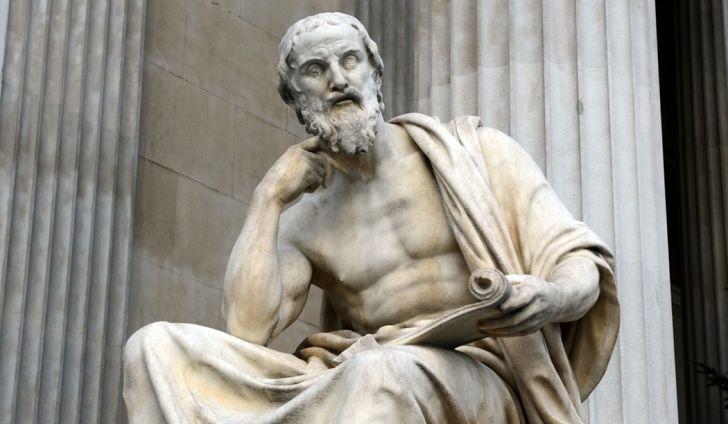
Thales of Miletus was an Ancient Greek philosopher, regarded by many as the first philosopher in history, for breaking from the prior use of mythology to explain the world and instead using natural philosophy. He was one of the Seven Sages, founding figures of Ancient Greece, and credited with the saying “know thyself”.
Thales is also renowned for his contributions to mathematics. He is credited as the first to have engaged in mathematics, science, and deductive reasoning. He is credited with making practical contributions to geometry and is famously associated with proposing that water is the fundamental substance from which everything arises.
While few written records of Thales’ works have survived, his influence on subsequent philosophers and the development of Greek thought is significant. His emphasis on seeking natural explanations and using reason to understand the world marked the beginning of a philosophical tradition that would flourish and evolve in the centuries to come.
Biography
Thales of Miletus was born around 624 BCE in Miletus, an ancient Greek city on the western coast of Anatolia (modern-day Turkey). He was born into a noble family, however, despite his aristocratic background, he pursued intellectual pursuits, showing an early inclination towards philosophy, mathematics, and astronomy.
Thales was likely exposed to Egyptian and Babylonian mathematical and philosophical ideas. He is said to have traveled widely, including visits to Egypt, where he gained knowledge in geometry and astronomy. He is also recognized as one of the Seven Sages of Greece, a semi-legendary wise statesman, and a founding figure of Ancient Greece.
Philosophical Contributions
As stated earlier, Thales of Miletus is often regarded by many as the first philosopher in history because he aimed to explain natural phenomena via rational hypotheses referencing natural processes. Before him, Early Greeks, and other civilizations often invoked idiosyncratic explanations of natural phenomena regarding the will of anthropomorphic gods and heroes.
Thales is often remembered for his proposal that water is the fundamental substance or “archê” (origin) of all things. He believed that water could transform into various forms, and he speculated that everything in the world originated from and returned to water. He also demonstrated an interest in astronomy and was credited with predicting a solar eclipse around 585 BCE. He was also credited with discovering the position of the constellation Ursa Major as well as the timings of the solstices and equinoxes.
Thales was also known for introducing the theoretical and practical use of geometry to Greece, and has been described as the first person in the Western world to apply deductive reasoning to geometry, making him the West’s “first mathematician.” He is said to have applied geometric principles to measure the height of Egyptian pyramids and the distance of ships from the shore. Though many of his works are lost, the famous Thales Theorem is named after him.
Thales was not just a theoretical philosopher; he was also involved in practical matters. He advised the Milesian government on irrigation techniques, demonstrating his ability to apply scientific knowledge to solve real-world problems. He was also an engineer; credited with diverting the Halys River. Additionally, he applied his astronomical knowledge to navigation, making contributions to the development of early navigation techniques.
Legacy
As the first philosopher and mathematician in history, Thales of Miletus laid the groundwork for the philosophical tradition in ancient Greece and profoundly influenced other Greek thinkers and, ultimately Western history. His emphasis on finding natural explanations for phenomena and his focus on a single, underlying substance influenced later philosophers, including Anaximander and Heraclitus.
Thales’ approach to seeking rational explanations for natural phenomena marked a shift from mythological explanations, paving the way for the development of Western philosophy. His understanding of celestial phenomena contributed to his reputation as a philosopher with practical knowledge.
While much of Thales’ written work has been lost over time, his impact on the history of philosophy, science, and mathematics is undeniable. He remains a foundational figure in the intellectual history of ancient Greece, and his ideas have continued to influence thinkers throughout the centuries. He died at the age of 78 during the 58th Olympiad (548–545 BC) and attributes his death to heat stroke and thirst while watching the games.
Read More:
-

 Education8 months ago
Education8 months agoCommonwealth Scholarship 2023
-

 World9 months ago
World9 months ago10 Most Dangerous Female Prisons In The World
-

 Entertainment1 year ago
Entertainment1 year ago10 facts you didn’t know about Joshua Maponga
-

 Sport2 years ago
Sport2 years agoImportant facts you should know about African Countries Going for The 2022 FIFA WORLD CUP IN QATAR.
-
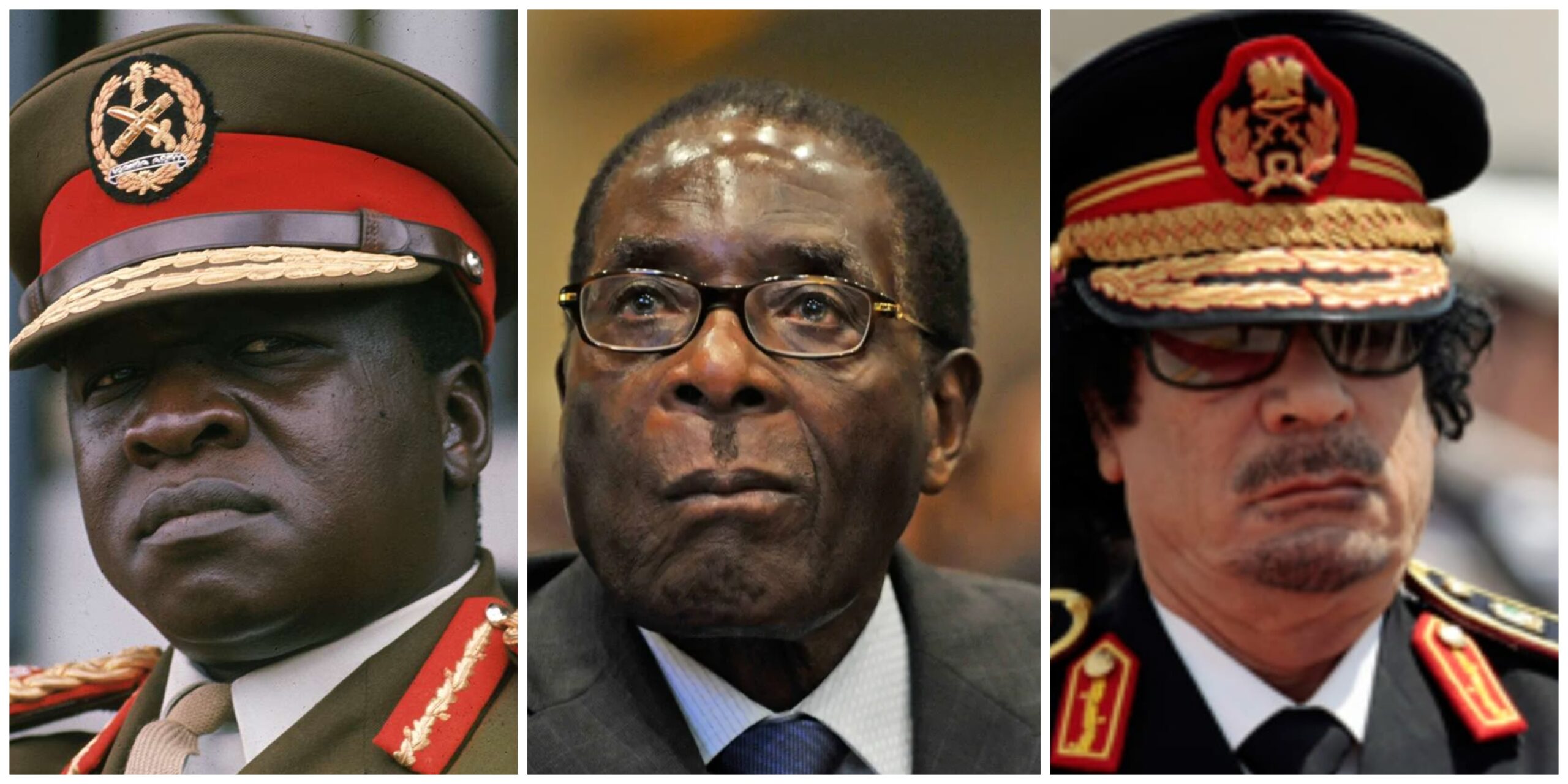
 History11 months ago
History11 months ago10 Most Brutal African Presidents In History



